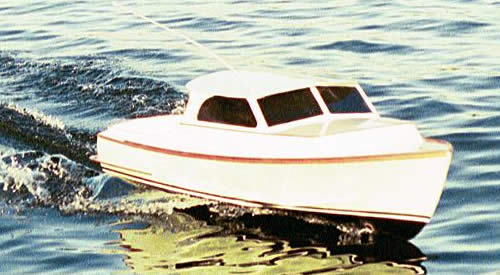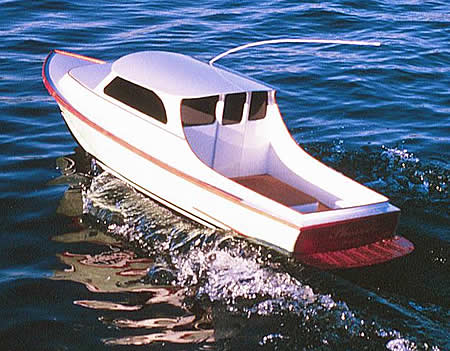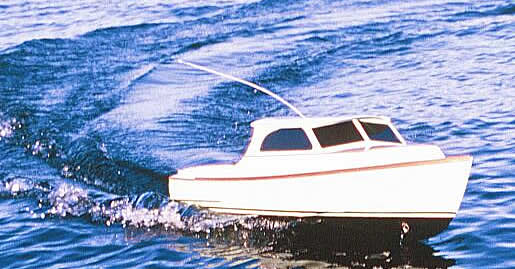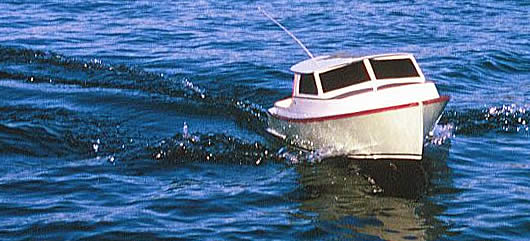The color and detail in these photos is not the greatest. Still, you
can get the idea. We built this 1/8 scale model of the client's boat before
building the underwater control surfaces: skeg, rudder, trim tabs, etc.
It is not very difficult to design a fast powerboat so that it floats
on its lines and attains the desired speed with the desired power. However,
it is not so easy to design underwater control surfaces which will perform
perfectly and without alteration on the client's boat. The dynamics are
simply too difficult to model mathematically. Hence this model. We made
some changes to rudder and skeg size, placement, and airfoil type as a
result of model testing. The boat runs just like the model: scaling factors
are well known.
We could have done the more common tank testing. However, that would
have given us only information about pitch, heave, and speed. These quantities,
while important, were known to us from previous, similar hulls. Tank testing
would not have told us much about the dynamic response of the boat to
steering input.

The model just coming on plane. Note the similarity to the photo of the
full-size boat at about this same scale speed.

Going some faster here. Again, note the location of the bow thruster.
The wake pattern is about the same as the full-size boat, though its appearance
is different due to non-scale differences in surface tension.

Full throttle, 30 knots plus for the full-size boat. Very similar spray
pattern and running attitude.

A view from the stern, again showing the lovely wake and dry boat.

Turning to starboard.

Turning to port. Notice that she banks into the turn similarly in both
turns, just like the full-size boat does. Banking into the turn is by
far the most comfortable, and is a function of rudder and skeg size and
placement.
Though we fitted trim tabs to the model boat, we concluded that they
would not be necessary to adjust the fore-and-aft running attitude of
the boat. They are not being used in these photos. They also were not
necessary in the full-size boat, except to make small adjustments in heel
to accomodate moving weights (persons). They are kind of fun to play with,
though.
The point of showing you these photos is to literally illustrate one
of our methods of ensuring the integrity of our design process. The client
gets what he is paying for. A photo of a computer screen with some lines
on it, or a photo of a large spreadsheet isn't very informative, though
we also use those very important design tools.



